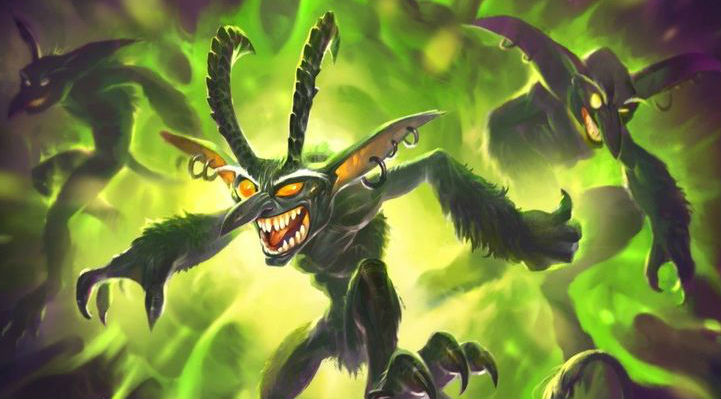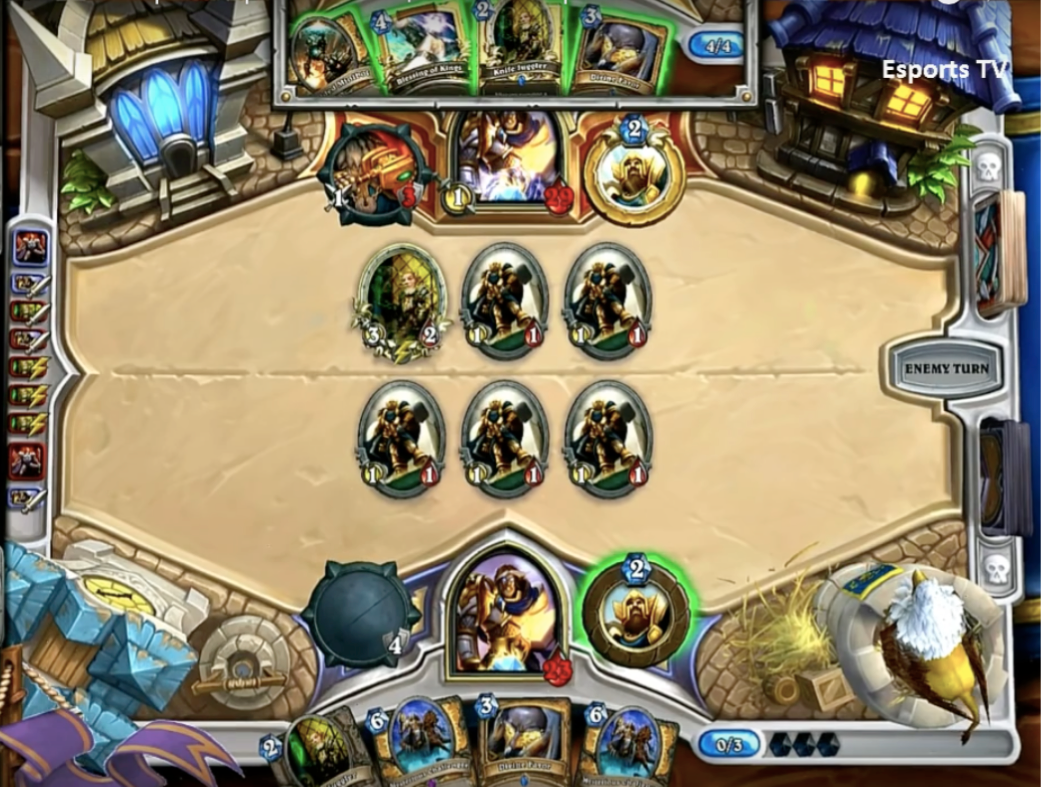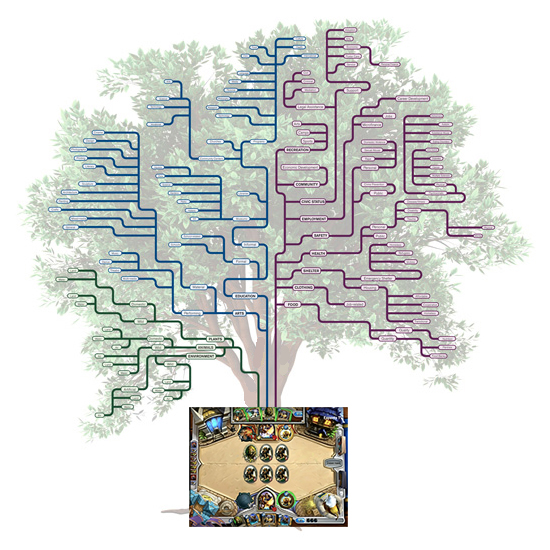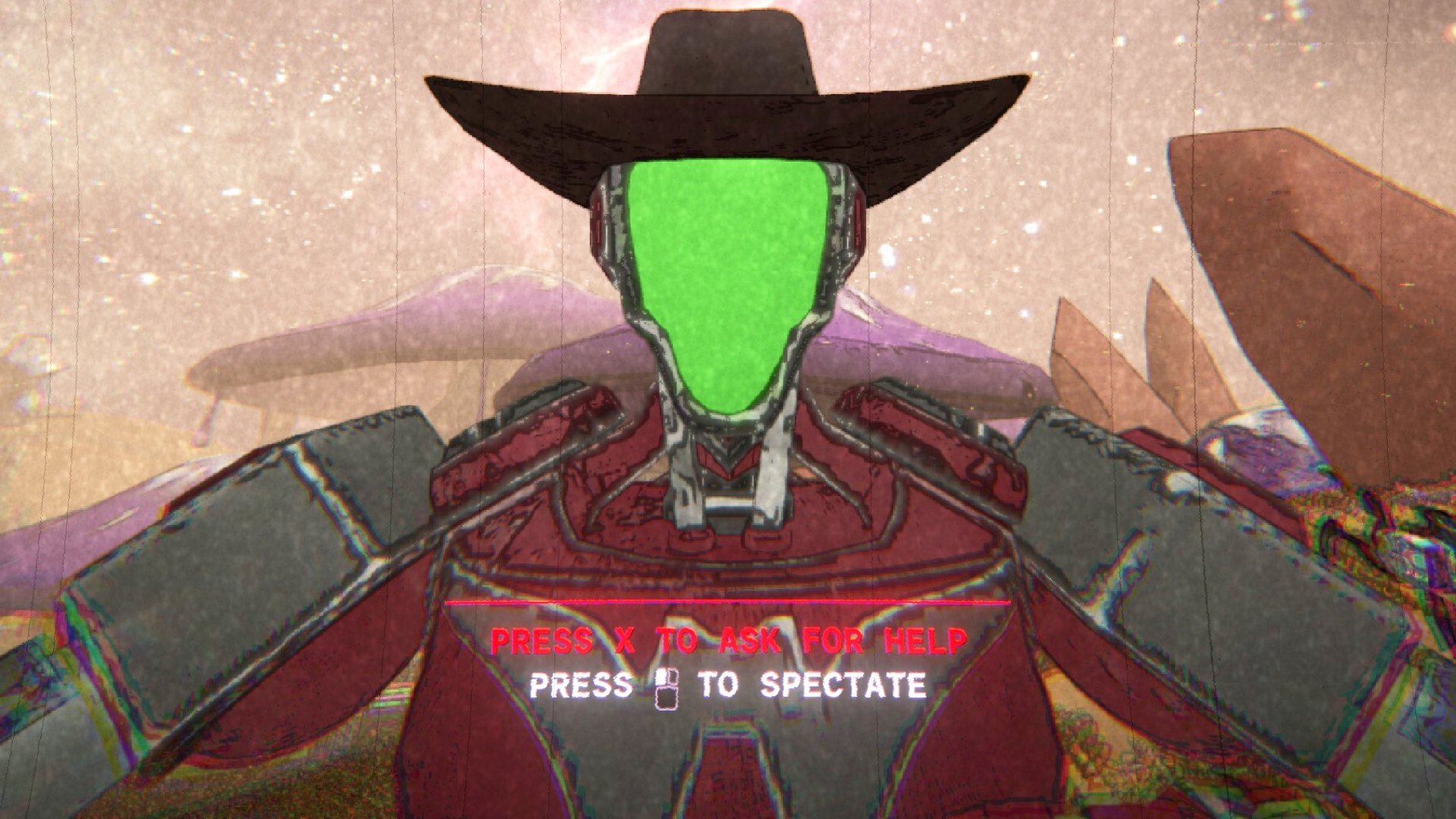Hoej on consistency and RNG in Hearthstone

It’s often assumed that Hearthstone is a very RNG-heavy game with a limited skill cap. “CasinoStone” or “Professional Coin Flippers” are phrases often used to criticise the game, while “I was unlucky” or “I lost to a top deck” are frequent excuses. Most people would probably agree that there are a lot of random aspects to Hearthstone, since it’s a turn-based card game with many RNG effects, but in this article I actually want to focus on the opposite. I will argue that Hearthstone is way more consistent than it’s given credit for, and that the better player will win way more games against a less experienced opponent in the long run.

Hoej is a Danish Hearthstone player for team Natus Vincere. He won Viagame HouseCup 2, Gfinity Summer Masters 2, and recently appeared in our list of the top 10 Hearthstone pros at #7. You can find him on Twitter here.
To start this discussion I would like to expand the context to other esports which are recognized as being highly skill-based (these stats are without draws):
Evil Genius’ DotA 2 team, who won The International this summer, has a win rate of 63% (365W/175L). Team Solomid CS:GO’s team has a win rate of 70% (158W/63L). Team Fnatic’s LoL team has a win rate of 68% (179W/86L). These teams are some of the best in their respective games, so a win rate around 67% is seen as high-skilled and consistent.
Now compare with Thijs “ThijsNL” Molendijk, who plays Hearthstone for G2 and has a win rate of 64% (234W/133L) in competitive games—very impressive compared to the sample size. So is Thijs simply outstanding when it comes to making ‘top decks’? Did he face a lot of weak opponents? Or could it actually be that all his hours of training have made Thijs much better at Hearthstone than the average player?
To figure it out, we need to determine what it means to be a “good Hearthstone player”. In my opinion, it is almost impossible to find the correct play every turn in Hearthstone, because you don’t know your opponent's cards or what his next top deck will be. Nevertheless, you’re able to make the optimal play based on the information you have and continue to get from your opponent—like being aware of how long a specific card has been in your opponent’s hand, keeping track of which cards have already been played, thinking several turns ahead, examining how the board potentially interacts with your cards in hand, considering how far ahead you are and deciding whether to make a risky play or stay safe.
What's the optimal play?
Even when RNG effects are involved, you have to decide how to give yourself the best chance to exploit them to your advantage. So for me “a good Hearthstone player” is one who takes all these factors into consideration and always seeks to find the right play, which then ensures a better overall win rate. Let me give an example:

In this example the game is between two Secret Paladins. The player on top (Player 1) is ahead at this stage and now looking for the optimal play to ensure a better overall win rate. He knows that his opponent (Player 2) runs one Ironbeak Owl and one Consecration in his deck. Player 1 has been keeping track of Players 2’s cards, so he also knows that Player 2 still has one card left in hand from his mulligan. Player 1’s experience tells him that Player 2 might keep a Consecration in his opening hand, but would probably not keep an Ironbeak Owl in a mirror matchup. Nonetheless, Player 2 might have drawn into the Ironbeak Owl from the three other cards. Therefore Player 1 needs to consider the following options:
Keep up to date with the most important stories and the best deals, as picked by the PC Gamer team.
1. Play Knife Juggler and Shielded Minibot, then clear the rest of the Silverhand Recruits who didn’t die to the Juggler’s knives. This play will increase your win rate IF your opponent doesn’t have a Consecration. This play should be classified as the high risk/reward play.
2. Play Knife Juggler or Shielded Minibot and Hero power, then clear the rest of the Silverhand Recruits who didn’t die to the Juggler’s knives. This play is safer against a Consecration.
3. Play only Hero Power, then clear the rest of the Silverhand Recruits who didn’t die to the Juggler’s knife. This play is very conservative and only plays around Consecration.
4. Play Blessing of Kings on the Knife Juggler, then go face with your Knife Juggler and trade with the Light’s Justice weapon.
These four plays will influence Player 1’s win rate differently depending on what Player 2 does next turn. Player 1 therefore needs to consider how far he is ahead at this stage of the game, and how safe or risky he needs to play to win this game. In this regard, the rule of thumb is you should always play safe if you think you are ahead, whereas you need to be riskier if you believe you are behind.
...top decking the right card, or having a perfect hand, is often a result of good deck building.
Player 1 decides to go with option four. On the following turn, Player 2 top decks an Ironbeak Owl, which means he is able to play his own Juggler and afterwards silence Player 1’s Juggler. One of the knives hits Player 1’s Juggler enabling Player 2 to clear it with his weapon. Player 2 was able to create a huge swing with his top deck and put himself ahead in the game. So does that mean Player 1 made a misplay? In my opinion, no. He made the right decision to increase his win rate based on the facts he had.
The poker comparison
You can make a similar example for poker. Let's say Player 2 has two 7s in his hand and he decides to go all in preflop. Player 1 looks at his cards to see he has two Kings, and without hesitation decides to call the all in. At this stage of the game Player 1 has an 80% chance of winning the pot. Nevertheless, a 7 hits the turn (Never Lucky, Babyrage) which means that Player 2 ends up winning the pot even though he only had a 20% chance of winning preflop. However, the call from Player 1 was still the correct percentage play, which means that if he keeps making similar decisions—where he is favoured by the odds—he will end up winning more hands and games in the long run. The same goes for Hearthstone.
I think players and the casters need to act as ambassadors for Hearthstone by not talking about RNG as much.
All the options Player 1 had would have affected the following turns very differently—and this example was just a turn 4. My point is that the more experienced Hearthstone player will more often make the “optimal play” each turn compared to a less experienced player, so in the long run the experienced player will be able to grind his opponent down and win more games.
Another aspect I would like to highlight here is that if player 1 decides to take a defensive, aggressive, or risky line of play, then some people recommend that he should stick to the same style of play for the rest of the current game to ensure consistency. I highly disagree with this, because as a skilled player you constantly need to adjust to the current situation in the game.

Every decision you make opens up different branches of possibility as the match plays out.
So far, we can conclude that there are many factors to consider and decisions to make on even seemingly simple turns, and each of these will influence your upcoming turns and win rate differently, much like the tree diagram above. Now imagine if you had to plan for a whole tournament, and apply that same tree diagram to deck building. The competitive player has to decide which classes to bring, which of his opponent’s decks to ban, what deck to open with, and so on. These factors aren’t highlighted enough in my view, as we consider individual games in isolation. However, top decking the right card, or having a perfect hand, is often a result of good deck building.
In regards to deck building and play style, Adrian “Lifecoach” Koy is best known for playing midrange and control decks. His reason is to ensure that his games tend to have more turns, enhancing his chances of winning by giving himself more turns in which to play better than his opponent. Furthermore, one of Lifecoach’s signatures is to use all of the time allowed—meaning he “ropes”, even on simple turns—because time is another valuable resource for the player. So he always plans several turns ahead, and tries to predict what his opponent might play in the upcoming turns.
Tech choices vs consistency
Less experienced players have a tendency to play more “tech” cards like The Black Knight, Mind Control Tech, Harrison Jones, etc. Tech cards have the ability to create tempo swings in games, so of course you need some of them in your deck. However, it’s important to bear in mind that these cards tend to be inconsistent. In contrast, experienced players focus on creating solid decks and making plays that increase their win rate a little each turn in every game. Those less experienced tend to make fewer optimal plays and need a triumphant tech card to get back into the game. However, because tech cards are not very flexible, your expected win rate will decrease in games where you aren’t able to gain value from them, and you even risk losing to players who are less experienced more regularly.
I know that Hearthstone is influenced by RNG and that it is not all skill based. Nevertheless, I still believe that there is more to it than luck thanks to elements like deck building, mind games, keeping your head straight during matches, and making optimal plays on every turn. This article is not meant as a plea for Twitch chat to stop joking about RNG—Twitch chat has actually played a large part when it comes to the success of Hearthstone as an esport. Chat makes the whole experience so much fun!
This article is instead meant as a little eye-opener for competitive ladder players, tournament players, and also Hearthstone casters. Hearthstone players often highlight RNG as the reason they lost games, but this is just the easy way of handling a lost match. It takes courage to highlight your own mistakes and questionable plays—especially if you are live on stage talking about the game. Personally, I’ve made my share of misplays in live tournaments, and I’m never afraid of saying so afterwards because I don’t learn anything from the RNG, but I do learn a lot from my mistakes.
Guess studying chemistry is pretty useless... #missedLethal @ViagameHS @PlayHearthstone pic.twitter.com/F2tGeghjC4 May 30, 2015
I only have three or four decks which I feel totally comfortable playing, where I know my plays will be optimal 95-99% of the time. This is due to my tournament focus, where you can usually only bring three decks. Unfortunately, this is also a disadvantage for me because my opponents often know what I will bring to a tournament—which my teammate Ostkaka showed in the final qualifier for BlizzCon this year.
My reason for writing this is actually pretty simple: I think we—the players and the casters—need to act as ambassadors for Hearthstone by not talking about RNG as much, and instead focusing more on the tough calls or how a specific plays influenced the game. Personally, I don’t get frustrated if I lose a game where I played well—I get frustrated when I win or lose due to misplays. There will always be variance in Hearthstone, but instead of focusing on things we can’t control, let’s focus on all the other awesome aspects of the game.
Thanks a lot to those of you who took the time to read the article—and Happy Feast of Winter Veil everyone!
Hoej originally posted a version of this piece on Reddit here. It is republished here with his permission, and with approved edits made for length and clarity.

PC Gamer Pro is dedicated to esports and competitive gaming. Check back every day for exciting, fun and informative articles about League of Legends, Dota 2, Hearthstone, CS:GO and more. GL HF!

